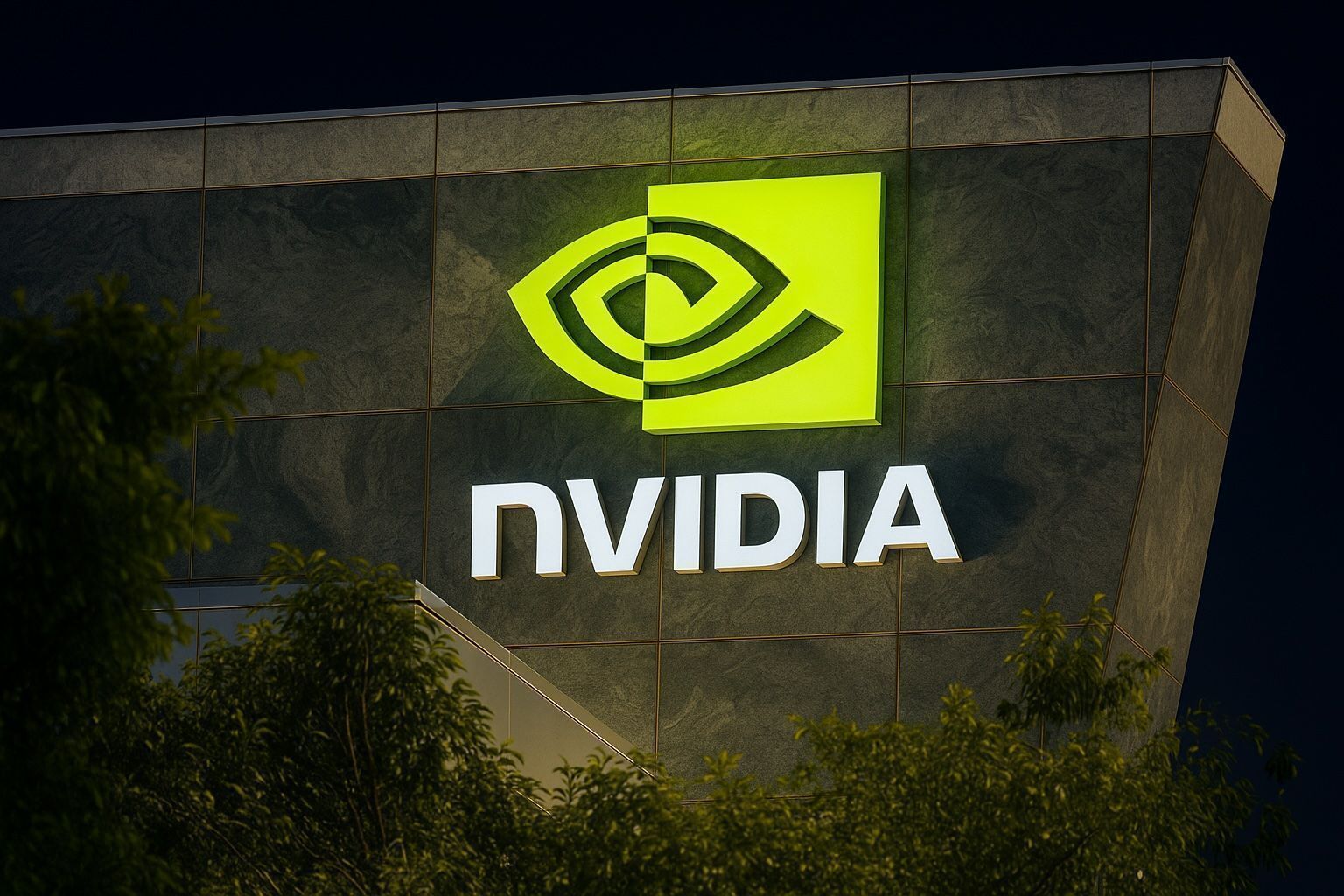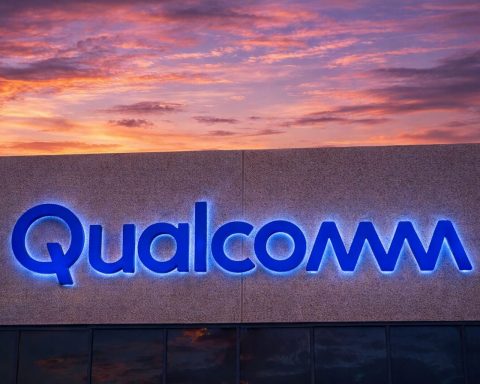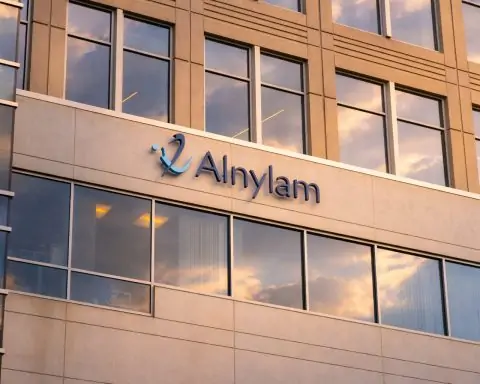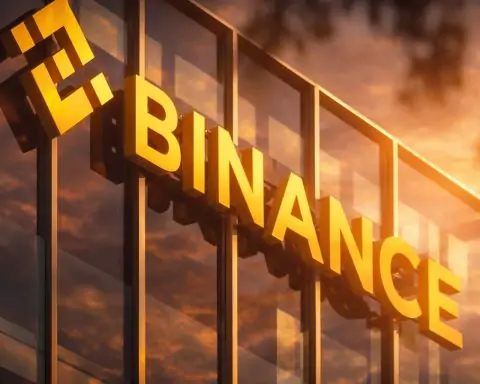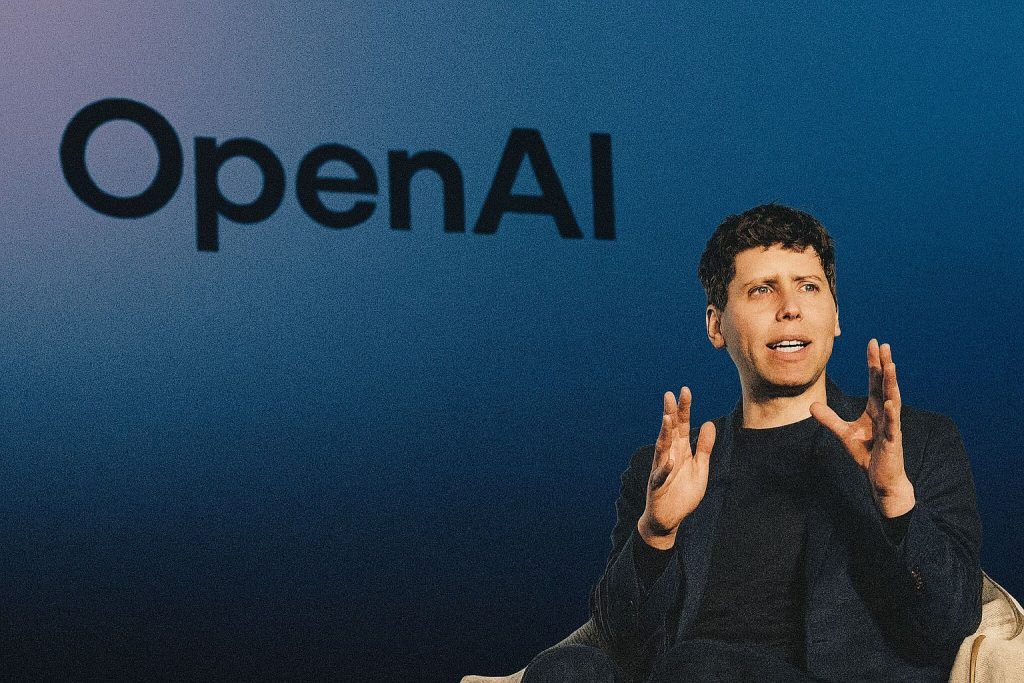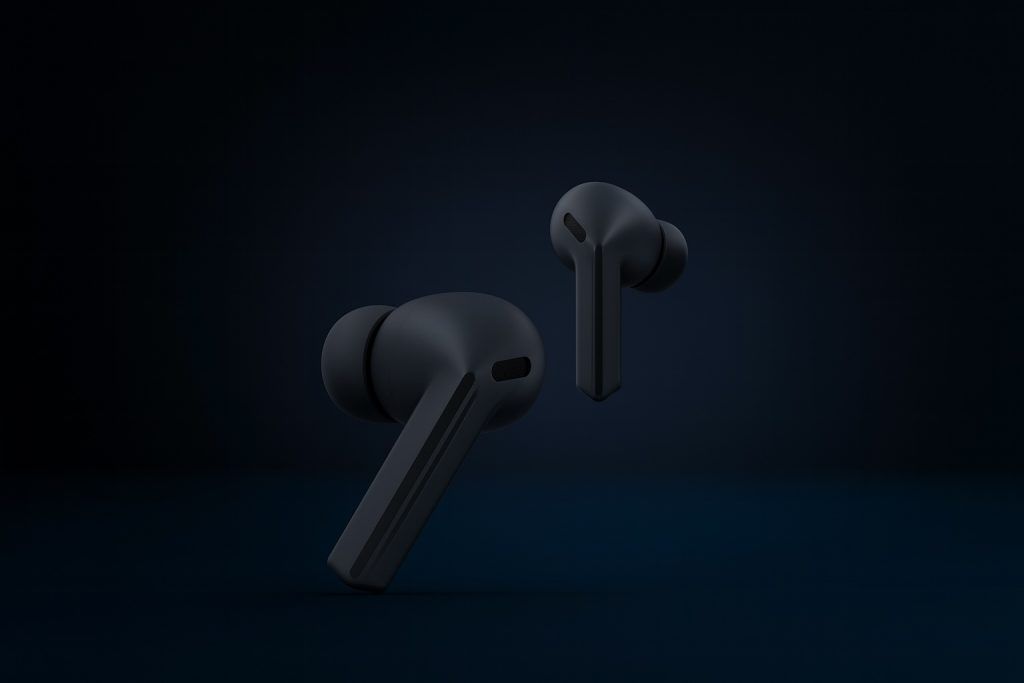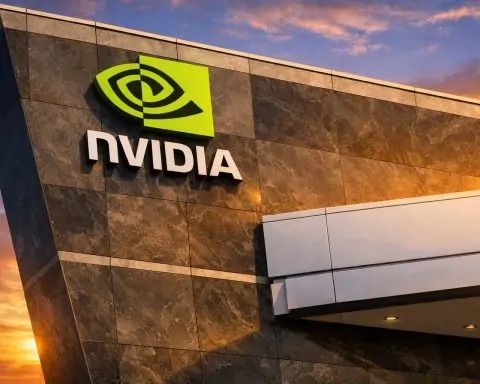- Nvidia is developing a China-only AI chip named B30A, based on the Blackwell architecture, designed to outpace the current H20 while complying with U.S. export controls.
- The B30A will be a single-die design and is expected to deliver roughly half the raw computing power of Nvidia’s dual-die B300 accelerator.
- The B30A will include high-bandwidth memory (HBM) and NVLink interconnect, matching the H20’s interconnect capabilities.
- Nvidia hopes to ship sample B30A units to Chinese companies for testing as early as September.
- Analysts say the B30A could be 30-50% less powerful than Nvidia’s top-end hardware but still faster than the H20 in some AI tasks.
- Nvidia is also preparing the RTX 6000D, a lower-cost China-focused inference chip priced at about $6,500–$8,000, using conventional GDDR memory with memory bandwidth around 1.398 TB/s.
- The H20 was banned for China in April 2025, Nvidia halted shipments and took a $5.5 billion inventory write-off; in July 2025 the U.S. granted Nvidia and AMD special licenses to resume H20 sales with a 15% revenue-share to the U.S. government.
- Nvidia’s China market share for AI accelerators fell from about 95% before 2022 to around 50% after export curbs.
- Chinese regulators and state media publicly questioned Nvidia’s H20, summoned Nvidia representatives, and urged Chinese companies to avoid Nvidia GPUs in sensitive government work, promoting domestic alternatives.
- Nvidia has repeatedly produced China-specific chips (A800, H800, H20, RTX 6000D, and now B30A) to navigate export rules, aiming to keep Chinese customers within its CUDA ecosystem.
Nvidia is racing to release a new AI superchip for the Chinese market that sources say will outperform the current H20 model, despite stringent U.S. export controls. The chip, tentatively called “B30A,” is based on Nvidia’s latest Blackwell architecture and is designed to deliver higher performance than any processor Nvidia is currently allowed to sell in China. This development comes amid an escalating tech battle between the U.S. and China over advanced semiconductors, turning a cutting-edge piece of silicon into a geopolitical flashpoint.
A Next-Gen AI Chip Tailored for China
According to an exclusive Reuters report, Nvidia’s new B30A chip will be built on the state-of-the-art Blackwell GPU architecture and configured specifically for Chinese clients. This chip will feature a single-die design, meaning all its core processor components reside on one piece of silicon, unlike Nvidia’s top-tier “B300” cards that use a more powerful dual-die (multi-chip) configuration. By using a single large chip instead of two, the B30A is expected to deliver roughly half the raw computing power of Nvidia’s flagship dual-die B300 accelerator. High-bandwidth memory (HBM) and NVLink interconnect technology will be included, matching features of the existing H20 model and allowing fast data transfer between chips. In effect, the B30A aims to pack as much punch as possible within U.S. export limits – offering China a taste of Nvidia’s latest generation, albeit in a dialed-down form.
Nvidia hopes to ship sample units of the B30A as early as next month (September) to Chinese companies for testing. The chip’s exact specifications are still being finalized, and regulatory approval from Washington remains uncertain. Nvidia stated that it always “follows rules the U.S. government sets” and only offers products “with the full approval of the applicable authorities”. In other words, the B30A will only launch if it stays on the safe side of U.S. tech export rules. Company insiders, however, are cautiously optimistic that this “Blackwell-lite” processor could thread the needle between meeting China’s AI computing needs and complying with American regulations.
How B30A Stacks Up vs. H20, H100, and A800
The B30A is poised to leapfrog Nvidia’s current China chip, the H20, in performance. The H20 – built on Nvidia’s previous-generation Hopper architecture – was until now the most advanced GPU Nvidia could sell to China, after more powerful models were barred by U.S. sanctions [1]. By leveraging the newer Blackwell design, the B30A should offer greater efficiency and speed than the H20, even if its raw computing power is capped at roughly 50% of Nvidia’s unrestricted flagship chip. U.S. officials themselves have hinted the new chip might be “30% to 50%” less powerful than Nvidia’s top-end hardware, reflecting the kind of performance haircut needed to satisfy export rules [2] [3]. President Donald Trump bluntly labeled the H20 “obsolete” – implying Nvidia’s next-gen scaled-down chip (the likely B30A) would still be a significant upgrade for Chinese users.
Compared to Nvidia’s global products, the B30A is a constrained version of the company’s cutting-edge tech. Nvidia’s current flagship for unrestricted markets is the H100 (Hopper) and soon the first Blackwell GPUs, which deliver maximum performance but are banned from China. In late 2022, when U.S. rules first hit, Nvidia responded by creating the A800 (a modified A100 Ampere GPU) and later the H800 (a modified H100 Hopper) for China. These versions mainly reduced chip-to-chip communication speeds – for instance, the H800’s interconnect bandwidth was about half that of a standard H100 – to stay under export thresholds. However, new Biden administration rules in 2023 tightened the limits (such as capping memory bandwidth) and rendered even H800 too advanced [4]. Nvidia then developed the H20 in 2024 as a compliant Hopper-based chip for China, with further curbs on performance. The H20 reportedly can reach up to 4 terabytes per second of memory bandwidth, but new U.S. rules introduced in 2025 set the limit around 1.4 TB/s, forcing Nvidia to redesign yet again.
The forthcoming B30A, by being built on a superior architecture, will likely narrow the gap with Nvidia’s high-end H100/B300 class devices even though it remains within export limits. It’s essentially Nvidia’s latest tech with the brakes on. For example, the Blackwell platform is reported to be dramatically faster than Hopper – Nvidia said in March its flagship Blackwell chip could be “up to 30 times faster” than its predecessor [5]. Even a throttled variant of that could outperform a “full” Hopper-based H20. In specific AI tasks, a top Blackwell might far exceed H20’s speed, so a half-power version could still outrun H20 by a comfortable margin. Analysts note that Chinese companies will jump at any performance gain they can get. The H20 itself is already a coveted part because it “outperforms the vast majority of AI processors” China can currently produce and benefits from Nvidia’s superior software ecosystem (CUDA). In short, the B30A would give China access to Nvidia’s newest generation – something like a next-gen H20 – keeping Chinese AI labs hooked on Nvidia’s platform while technically adhering to U.S. rules.
Nvidia is also preparing lower-tier China chips alongside the B30A. In fact, sources say the company has a second China-specific GPU coming focused on AI inference (running trained AI models). That chip, reportedly dubbed the RTX 6000D, will be cheaper and less powerful than the H20 – priced around $6,500–$8,000 versus $10,000+ for H20 – and uses conventional GDDR memory instead of the high-bandwidth HBM memory. By using simpler design and avoiding advanced packaging, the 6000D can be mass-produced more easily and sits just under the export thresholds (its memory bandwidth is about 1.398 TB/s, just under the 1.4 TB/s cap) [6] [7]. Nvidia plans to deliver small batches of these inference chips to Chinese customers by September [8]. Together, the B30A “Blackwell” and RTX 6000D represent a one-two punch: a higher-end training chip (if allowed) and a mid-range inference chip, both tuned to meet U.S. restrictions. This strategy shows how Nvidia is actively engineering around U.S. rules – making custom variants so it can continue selling to China without breaking the law.
U.S. Export Controls: The Rules of the Game
The development of these China-only chips is a direct result of U.S. export controls on AI hardware. Starting in 2022, Washington imposed sweeping rules to prevent China from obtaining the most advanced AI accelerators, citing national security concerns. Chips like Nvidia’s A100 and H100 were barred from China, as they could potentially be used to train sophisticated AI models with military or surveillance applications. The initial rules targeted a combination of high computing performance and fast interconnect speeds between chips. Nvidia responded quickly by introducing slightly neutered versions (A800, H800) that passed the technical thresholds. But in October 2023, the U.S. tightened the screws further, expanding the curbs to cover even those toned-down models (including setting explicit memory bandwidth limits). This forced Nvidia to cancel H800 sales and pivot to designing the more heavily downgraded H20 for China [9].
The H20 made its debut in 2024 as a Hopper-based GPU tailored to meet the letter of the new rules. Nvidia poured resources into this custom chip, as China is a huge market (worth ~$50 billion for data center chips) and their Chinese customers were desperate for AI silicon. For a while, the H20 was allowed – until April 2025, when the U.S. abruptly banned H20 sales too. The ban came amidst rising U.S.-China tensions and alarm over China’s AI advancements. Nvidia had to halt all H20 shipments, taking a painful $5.5 billion inventory write-off and walking away from an estimated $15 billion in potential sales. The message from Washington was clear: even scaled-down chips like H20 were viewed as too powerful if China bought them in large quantities.
However, this hardline stance did not last long. By July 2025, the U.S. government partially reversed course, granting Nvidia (and AMD) special licenses to resume H20 sales to China. This policy flip followed high-level discussions – including a meeting between Nvidia CEO Jensen Huang and President Trump – and was part of a broader deal with unusual conditions. In a surprising arrangement, Nvidia and AMD agreed to pay 15% of their China chip revenue to the U.S. government as a sort of “security tariff” for selling advanced AI chips to China. The unprecedented deal essentially let H20 back into China’s market, but with Washington skimming a portion of the proceeds [10] [11]. President Trump publicly defended this move, saying “the H20 is obsolete… but it still has a market” – and if Nvidia wants to sell next-gen chips to China, the U.S. should get a cut of the profit [12]. He framed it as a win-win: China gets only older or scaled-back chips, the U.S. maintains a tech edge, and the U.S. Treasury earns revenue in the process [13] [14].
Not everyone in Washington was thrilled with this compromise. Lawmakers from both parties raised concerns, arguing that even downgraded AI chips in Chinese hands could erode America’s lead in critical technologies. Representative John Moolenaar, who leads a House panel on China, criticized the H20 reprieve, noting that Nvidia’s H20 “significantly outperforms anything Chinese chipmakers like Huawei can currently produce, particularly in high-bandwidth memory” – and thus even H20-level chips might give China an undue boost. He and others have called for tighter rules or new export frameworks to address this constant game of cat-and-mouse with Nvidia’s workarounds. U.S. officials counter that the H20 was carefully evaluated and selling it wouldn’t compromise national security if done in limited fashion [15] [16]. An unnamed U.S. official told Reuters that Washington “does not feel the sale of H20 and equivalent chips compromises national security”, suggesting confidence that these chips are sufficiently neutered or can be controlled [17] [18]. Still, the move “sent shivers” through the ranks of China hawks in D.C., who fear any advanced silicon could help China train AI that “leapfrogs” U.S. capabilities if acquired in bulk [19] [20].
It’s against this backdrop that the new B30A chip is being developed. Trump himself telegraphed the possibility, mentioning that Jensen Huang has a “Blackwell… enhanced-in-a-negative-way” chip that might be allowed with 30–50% of the full power [21]. By floating this, the White House indicated it might approve a next-gen scaled-down GPU – essentially greenlighting Nvidia to create the B30A – as long as strict performance discounts are applied. Industry experts note this approach is somewhat unprecedented: traditionally the U.S. either bans or allows a chip, but here we see a potential middle ground where a very advanced architecture is allowed as long as it’s significantly hamstrung. Saif Khan, a former National Security Council tech director, warned that even scaled-down flagship chips could be bought in such volume by China that they’d enable “frontier-scale AI supercomputers” and risk America’s edge [22] [23]. This underscores why any approval for B30A will be heavily scrutinized, and why Nvidia’s roadmap is closely entwined with political decision-making.
Nvidia’s High-Stakes Strategy in China
For Nvidia, navigating these regulations is not just about compliance – it’s about business survival in a crucial market. China accounts for roughly 13% of Nvidia’s revenue (about $17 billion in the last fiscal year). Before the export curbs, Nvidia utterly dominated China’s AI accelerator market with an estimated 95% market share. CEO Jensen Huang has noted that since U.S. restrictions began in 2022, Nvidia’s share in China has plummeted to around 50%. The lost ground isn’t due to a local competitor beating Nvidia on merit, but simply because Nvidia is forbidden from selling its top chips, creating a vacuum that Chinese players and lesser alternatives are trying to fill. Huang bluntly warned that if U.S. export curbs continue or tighten, Chinese customers will inevitably seek out domestic alternatives – a trend that could permanently weaken Nvidia’s position. This is a huge strategic concern: once Chinese firms invest in developing or adapting to non-Nvidia ecosystems, Nvidia could lose them for the long haul. “Domestic Chinese technologies like Huawei are expected to catch up with the computing performance of downgraded versions within one to two years,” observed Nori Chiou, a semiconductor expert at White Oak Capital, adding that Nvidia’s remaining edge is its software and AI ecosystem (CUDA) that developers are already deeply familiar with. In other words, Nvidia wants to keep China’s AI talent dependent on its proprietary tools and hardware, even if that hardware is a slightly underpowered version.
To achieve this, Nvidia’s strategy has been proactive adaptation. The company has now designed multiple custom chips for China (A800, H800, H20, RTX 6000D, and now B30A) in rapid succession. Each time rules shift, Nvidia’s engineers go back to the drawing board to cut down performance a bit more while trying to retain as much functionality as possible. Nvidia’s statement in response to Reuters’ inquiries summed it up: “We evaluate a variety of products for our roadmap, so that we can be prepared to compete to the extent that governments allow”. This highlights how Nvidia is essentially running a parallel R&D track – one for unrestricted world markets, and another for China-compliant products. The company insists that “everything we offer is … designed solely for beneficial commercial use” and that it does not sell to military or government end-users in China. By emphasizing civilian use and sticking to the rules, Nvidia hopes to convince U.S. authorities to permit some flow of its chips into China rather than an outright ban.
The 15% revenue-sharing deal is another facet of Nvidia’s strategy, albeit a controversial one. By agreeing to effectively tax itself on Chinese sales, Nvidia showed willingness to make unusual concessions to preserve market access [24] [25]. This deal, brokered by the Trump administration, both signals Nvidia’s clout (few companies could negotiate such an arrangement) and the company’s desperation to not lose China entirely. As Trump described it, he initially even asked for “20% … for the country” before settling on 15% [26]. Nvidia went along, likely calculating that 85% of potential China revenue (with government blessing) is far better than 0% under a ban. An Nvidia spokesperson diplomatically said the company “follows the rules” and hopes export rules “will let America compete in China and worldwide” [27] [28]. Behind that statement is an argument Nvidia and others in the industry have made: if U.S. companies are completely barred from China, it could backfire by isolating U.S. tech firms from a huge market and pushing China to develop self-sufficiency faster. Nvidia would rather keep one foot in the door, even if it means giving the U.S. government a slice of the pie and selling slightly watered-down products. As long as Chinese buyers are using Nvidia chips (and Nvidia’s CUDA software libraries), there’s hope they won’t “defect” to rival platforms like Huawei’s. Analyst Kevin Cassidy of Rosenblatt Securities believes Chinese firms “are going to want to use the best chips available”, and right now Nvidia and AMD’s GPUs are still superior to local alternatives. That suggests Nvidia’s sales in China will continue strong if allowed, since Chinese companies will buy whatever top-tier chips they can get their hands on.
Notably, Nvidia’s competitive advantage isn’t just hardware performance. It’s the entire AI ecosystem it has built – the CUDA programming platform, AI frameworks, developer base, and support infrastructure. This ecosystem lock-in means many Chinese AI researchers prefer Nvidia GPUs because their code and tools are optimized for them. Huang himself pointed out that Nvidia’s edge is in how well its chips integrate into large AI clusters using Nvidia’s software stack. By continuing to sell chips (even limited ones) in China, Nvidia keeps Chinese AI labs within its ecosystem and can keep selling them software and future services. If Nvidia were frozen out, Chinese companies might pivot to alternate ecosystems (such as open-source alternatives or Chinese-designed frameworks), which in the long term could threaten Nvidia’s dominance beyond China. This is why Nvidia is willing to play ball with U.S. regulators to “let America compete in China”, as they put it [29]. It’s not just about this quarter’s sales – it’s about not losing the Chinese tech community to a rival architecture permanently.
Beijing’s Response: Caution, Criticism, and Self-Reliance
On the other side of the Pacific, China’s government and companies have had a mixed reaction to these developments. Publicly, Beijing has expressed deep skepticism about Nvidia’s chips and the U.S. government’s motives, even as Chinese tech firms quietly scramble to buy as many GPUs as they can. In August, after the U.S. lifted the H20 ban, Chinese regulators summoned executives from top internet companies – including Tencent, ByteDance (TikTok’s parent), Baidu, and others – for a series of meetings. Officials from the Cyberspace Administration of China (CAC) and other agencies grilled these firms on why they needed Nvidia’s H20 chips and whether they had considered domestic alternatives. They also voiced concerns about data security, noting that Nvidia was requiring some technical information from Chinese buyers (likely for U.S. license approval processes) that authorities feared might include sensitive details or customer data. In essence, regulators were warning Chinese tech companies to be cautious in heavily relying on U.S. chips. They pointedly asked, why buy American GPUs “when they could purchase from domestic suppliers?”.
Shortly after these private meetings, Chinese state media amplified the message in public. A social media account affiliated with state broadcaster CCTV, named “Yuyuan Tantian,” published a strongly-worded article criticizing Nvidia’s H20 chips. It claimed the H20 “pose security concerns” and even alleged the chips might contain a “backdoor” enabling remote shutdown or data access. The article derided the H20 as “neither advanced, nor environmentally friendly, nor safe,” and urged Chinese consumers “not to buy it”. Around the same time, the People’s Daily (the Communist Party’s official newspaper) ran a commentary demanding that Nvidia provide “convincing security proofs” to eliminate users’ worries about its chips. China’s cyberspace regulator (CAC) even summoned Nvidia’s representatives on July 31 to directly ask whether H20 has any hidden vulnerabilities; Nvidia firmly denied that its products have any “backdoors” or secret access channels. This orchestrated media campaign appears intended to justify any future limits on Nvidia’s chips by casting doubt on their security, and to encourage Chinese companies to invest in homegrown chips instead.
Indeed, multiple reports suggest Chinese authorities have informally advised companies to avoid Nvidia’s H20, especially for sensitive government or security-related uses. Bloomberg reported that notices went out discouraging state-owned enterprises and even private firms from using H20 GPUs in anything touching government work. Another report (from The Information) claimed regulators actually ordered tech giants like ByteDance, Alibaba, and Tencent to suspend H20 purchases entirely in the weeks after the U.S. ban reversal. (Reuters could not confirm an outright purchase halt, and Chinese firms did not publicly comment on these reports.) What is clear is that Chinese companies are under pressure to tread carefully. Even without a formal ban, the mere “concerns” expressed by regulators have a chilling effect – companies don’t want to get on the wrong side of Beijing by appearing too eager to buy American chips. Nvidia itself acknowledged this risk: if Chinese firms feel officials are against H20, they may scale back orders to stay “in step with regulators”.
Despite the official hand-wringing, Chinese tech companies still badly want Nvidia’s hardware. Industry analysts broadly agree that China’s leading AI players “still covet” GPUs like the H20 because of their strong performance in crucial AI tasks. In other words, whatever the government might say publicly, Chinese firms know that Nvidia’s chips are currently the best tools for the job. One Chinese AI researcher was quoted (anonymously) saying that domestic AI chips, while improving, “might not be as versatile” or as powerful for certain workloads. “Chips from domestic manufacturers are improving dramatically in quality, but they might not be as versatile for specific workloads that China’s AI industry hopes to focus on,” observed Homin Lee, a strategist at Lombard Odier in Singapore. He expects “strong demand” in China for any chips the Trump administration allows Nvidia and AMD to sell. Similarly, analyst Kevin Cassidy predicted Nvidia’s China sales won’t suffer much because “Chinese companies are going to want to use the best chips available. Nvidia’s and AMD’s chips are superior to local alternatives.” This illuminates a reality: China’s tech firms are essentially caught in a bind – they are encouraged to buy Chinese-made chips, but for cutting-edge AI projects, the U.S. chips (even slightly detuned ones) remain far more capable.
The Chinese government is aggressively trying to close this gap. In recent years, Beijing has poured billions into initiatives to achieve semiconductor self-reliance, especially in AI accelerators. Companies like Huawei have developed AI chips such as the Ascend series (e.g., Ascend 910B) that seek to rival Nvidia’s offerings. By some measures, Huawei’s latest AI chips are “on par with Nvidia in some aspects like computing power,” though they still lag in areas like software support and memory bandwidth. The Chinese startup Biren and others have also designed advanced GPUs, and there’s a burgeoning ecosystem of AI chip startups in China. State support is strong: the government has mandated more domestic AI chip usage in data centers and offers incentives to reduce reliance on foreign tech. However, U.S. sanctions have deliberately targeted the critical tools needed for making high-end chips – for instance, bans on exporting EUV lithography machines and other chipmaking equipment to China. This means Chinese fabs (like SMIC) struggle to mass-produce the most advanced chip designs even if they have the blueprints. As a result, China’s ability to scale up production of Nvidia-class chips is limited in the near term. An American lawmaker pointed out that while U.S. companies plan to deploy over 14 million AI chips in 2025, China’s top foundry SMIC might output only ~200,000 of Huawei’s Ascend 910B chips that year – highlighting a massive production capacity gap.
Still, the trend is clear: each round of U.S. export restrictions spurs China to double down on domestic innovation. “Starving China’s supply of U.S.-designed AI chips will have the opposite effect… it will push China to develop and deploy its own AI chip capacity more effectively, weakening America’s leadership in AI,” argues John Villasenor, a technology policy expert at Brookings. We’re already seeing this feedback loop. For example, after the latest GPU bans, Beijing launched a state-backed fund to support AI chipmakers, and Chinese research teams rolled out advanced AI models (like DeepSeek’s chatbot) using a patchwork of less advanced chips, demonstrating ingenuity in the face of shortage [30]. This, in turn, contributed to the U.S. imposing new H20 restrictions in early 2025 when it realized Chinese firms were achieving AI breakthroughs anyway. Now with the partial unbanning of H20 and talk of a B30A, China’s Foreign Ministry has kept a cautiously optimistic tone, urging the U.S. to maintain “stability and smooth operation” of the global chip supply chain. But at the same time, Chinese officials accuse Washington of “maliciously containing and suppressing China” via tech export measures [31], and they vow that China will find ways to get what it needs – either by building its own or sourcing from others not bound by U.S. rules.
The Global Chip Race and AI Geopolitics
This Nvidia saga highlights how cutting-edge computer chips have become a central front in the U.S.-China tech rivalry. Advanced AI chips are not just components for data centers – they are seen as strategic assets that could determine who leads in AI, which is increasingly viewed as a foundation of economic and military power. The U.S. has been striving to stay a step ahead by denying China access to the crown jewels of Silicon Valley, fearing that China could use powerful GPUs to supercharge surveillance systems, military AI, or to gain a decisive advantage in areas like autonomous weapons and intelligence analysis [32] [33]. China, for its part, is determined not to remain “generations behind” in AI hardware – a phrase often used by U.S. officials – and sees the U.S. export controls as an attempt to stifle its development. This dynamic has led to a tit-for-tat “chip war” beyond just Nvidia: for instance, China retaliated by restricting exports of certain raw materials (like gallium and germanium) crucial for semiconductor production, signaling it has leverage in other parts of the supply chain.
The global chip supply chain is highly interdependent. Nvidia designs its GPUs in the U.S., but the actual manufacturing is done by companies like TSMC in Taiwan. The high-bandwidth memory on these cards often comes from South Korea’s SK Hynix or Samsung. So export restrictions involve multiple countries – for example, a U.S. ban on a chip to China means TSMC (Taiwan) can’t fabricate it for Nvidia’s Chinese order, etc. Both Washington and Beijing are trying to rewire this supply chain in their favor. The U.S. has been working with allies (Japan, Netherlands, etc.) to limit China’s access to advanced chipmaking gear, while also investing in domestic semiconductor fabs to reduce reliance on Asian manufacturing. China is pouring money into indigenous R&D and even mandating domestic chips in certain infrastructure to give its local industry a boost. But changing the supply chain takes time – years, if not decades. In the short term, Nvidia’s workaround chips like H20 and B30A act as a stopgap, allowing Chinese companies to progress in AI (though perhaps a bit slower than they would with full-fat H100s) while the geopolitical tug-of-war continues.
From a market perspective, Nvidia’s new B30A chip (if approved) could have ripple effects globally. It would further cement Nvidia’s dominance in AI silicon by keeping Chinese clients in the fold, which could be crucial for Nvidia’s growth and R&D funding that benefits its products worldwide. It could also temper China’s urgency to fully pivot to domestic chips, since a Blackwell-based GPU – even a limited one – is still a huge boon for Chinese AI labs. On the flip side, if U.S. policymakers later decide the B30A (or equivalent) is too much and yank the leash again, Nvidia could find itself with unsellable inventory (as happened with H20) and Chinese firms might then accelerate efforts to never be caught short again. It’s a delicate balance: too lenient, and the U.S. fears it’s fueling China’s AI rise; too strict, and it might isolate U.S. companies and spur China to innovate around them.
Experts are divided. Anthropic’s CEO Dario Amodei (an American AI lab leader) argued that “well-enforced export controls are the only thing” preventing China from getting “millions of chips,” suggesting that stringent limits are essential to Western AI leadership. Former U.S. national security officials like Matt Pottinger echo that hawkish stance. Meanwhile, others like David Sacks, who advises the Trump administration on AI, worry that “overly restrictive” rules could backfire by allowing Chinese companies to gain more global market share as they innovate around U.S. technology. The Brookings Institution’s analysis, for example, warns that blocking China’s access entirely could accelerate China’s self-sufficiency and ultimately “weaken America’s leadership” in AI. The ideal outcome for the U.S. might be to maintain just enough of a tech edge and control that China remains a step behind – but not to push so hard that China succeeds in cutting the U.S. out of the equation entirely. That’s a very fine needle to thread.
For now, Nvidia finds itself at the center of this tech tug-of-war. The company’s new China-focused chip will be a litmus test of sorts: Can the U.S. and Nvidia craft a compromise that satisfies Chinese demand without undermining U.S. strategic goals? If the B30A is allowed and adopted widely in China, it might buy time for both sides – time for China to develop next-gen chips of its own, and time for the U.S. to assess the impact of its export policy. If the chip is blocked or if Chinese buyers shy away due to government pressure, it could further bifurcate the tech world, with China forced down a path of complete self-reliance sooner.
Expert Voices on the Road Ahead
“When a type of chip is neither environmentally friendly, nor advanced, nor safe… we certainly have the option not to buy it.” – Chinese state media account Yuyuan Tantian, urging consumers to shun Nvidia’s H20 over alleged security risks.
“We must not allow U.S. companies to sell these vital AI assets to Chinese entities. The H20 chip significantly outperforms anything Chinese chipmakers like Huawei can produce.” – U.S. Congressman John Moolenaar, warning that even Nvidia’s scaled-down chips give China too much of a leg-up.
“Domestic [Chinese] chips are improving… but might not be as versatile for specific workloads. I anticipate strong demand for any chips the U.S. allows Nvidia to sell [to China].” – Homin Lee, senior macro strategist at Lombard Odier, highlighting Chinese firms’ ongoing reliance on Nvidia.
“Overly restrictive export controls will allow Chinese companies to gain more market share around the world.” – David Sacks, Trump administration tech adviser, cautioning that excessive bans could undermine U.S. industry in the long run.
“Starving China’s supply of U.S.-designed AI chips will push China to more effectively develop its own… ultimately weakening America’s leadership in AI.” – John Villasenor, Brookings Institution fellow, arguing that a complete cutoff could backfire strategically.
“Everything we offer is with the full approval of the authorities… designed solely for beneficial commercial use.” – Nvidia spokesperson, emphasizing the company’s compliance and intent to serve civilian markets only.
In summary, Nvidia’s new B30A chip for China encapsulates the high-tech chess match between two superpowers. Technically, it promises Chinese companies a much-needed performance boost for AI development, keeping them in the Nvidia fold with a Blackwell-generation product that (on paper) doesn’t violate U.S. rules. Strategically, it represents an experiment in how far the U.S. is willing to go in letting cutting-edge tech flow to a rival nation under controlled conditions [34] [35]. The coming months will reveal whether Washington approves this chip and under what terms, and how Beijing and Chinese tech giants respond. The stakes are enormous: the outcome will influence AI research trajectories in China, the competitive position of U.S. firms, and the balance of power in the global AI race. As one Chinese AI executive put it off-record, “It’s a dance on eggshells. Everyone is watching what Nvidia can or cannot ship.” And that dance, between innovation and regulation, may well define the next chapter of the U.S.-China technology rivalry.
Sources:
- Liam Mo & Fanny Potkin, Reuters – “Exclusive: Nvidia working on new AI chip for China that outperforms the H20”
- Liam Mo & Fanny Potkin, Reuters – “Exclusive: Nvidia to launch cheaper Blackwell AI chip for China after US export curbs” (May 2025)
- Reuters (Beijing) – “Chinese state media says Nvidia H20 chips not safe for China”
- Reuters (Beijing) – “China cautions tech firms over Nvidia H20 AI chip purchases”
- Karen Freifeld et al., Reuters – “Trump opens door to sales of version of Nvidia’s next-gen AI chips in China” [36] [37]
- Slashdot/Bloomberg summary – “China Urges Firms to Avoid Nvidia H20 Chips…”
- Anton Shilov, Tom’s Hardware – “U.S. legislators criticize decision to resume Nvidia H20 shipments”
- Louise Matsakis, Wired – “Why Trump Flip-Flopped on Nvidia Selling H20 Chips to China”
- John Villasenor, Brookings – “How overly aggressive bans on AI chip exports to China can backfire”
- Reuters (Aug 2025) – various technology news and analyst quotes on Nvidia, China, and AI chips
References
1. www.reuters.com, 2. www.reuters.com, 3. www.reuters.com, 4. www.datacenterdynamics.com, 5. www.reuters.com, 6. www.reuters.com, 7. www.reuters.com, 8. www.reuters.com, 9. www.datacenterdynamics.com, 10. www.reuters.com, 11. www.reuters.com, 12. www.reuters.com, 13. www.reuters.com, 14. www.reuters.com, 15. www.reuters.com, 16. www.reuters.com, 17. www.reuters.com, 18. www.reuters.com, 19. www.reuters.com, 20. www.reuters.com, 21. www.reuters.com, 22. www.reuters.com, 23. www.reuters.com, 24. www.reuters.com, 25. www.reuters.com, 26. www.reuters.com, 27. www.reuters.com, 28. www.reuters.com, 29. www.reuters.com, 30. www.brookings.edu, 31. www.reuters.com, 32. www.reuters.com, 33. www.reuters.com, 34. www.reuters.com, 35. www.reuters.com, 36. www.reuters.com, 37. www.reuters.com
